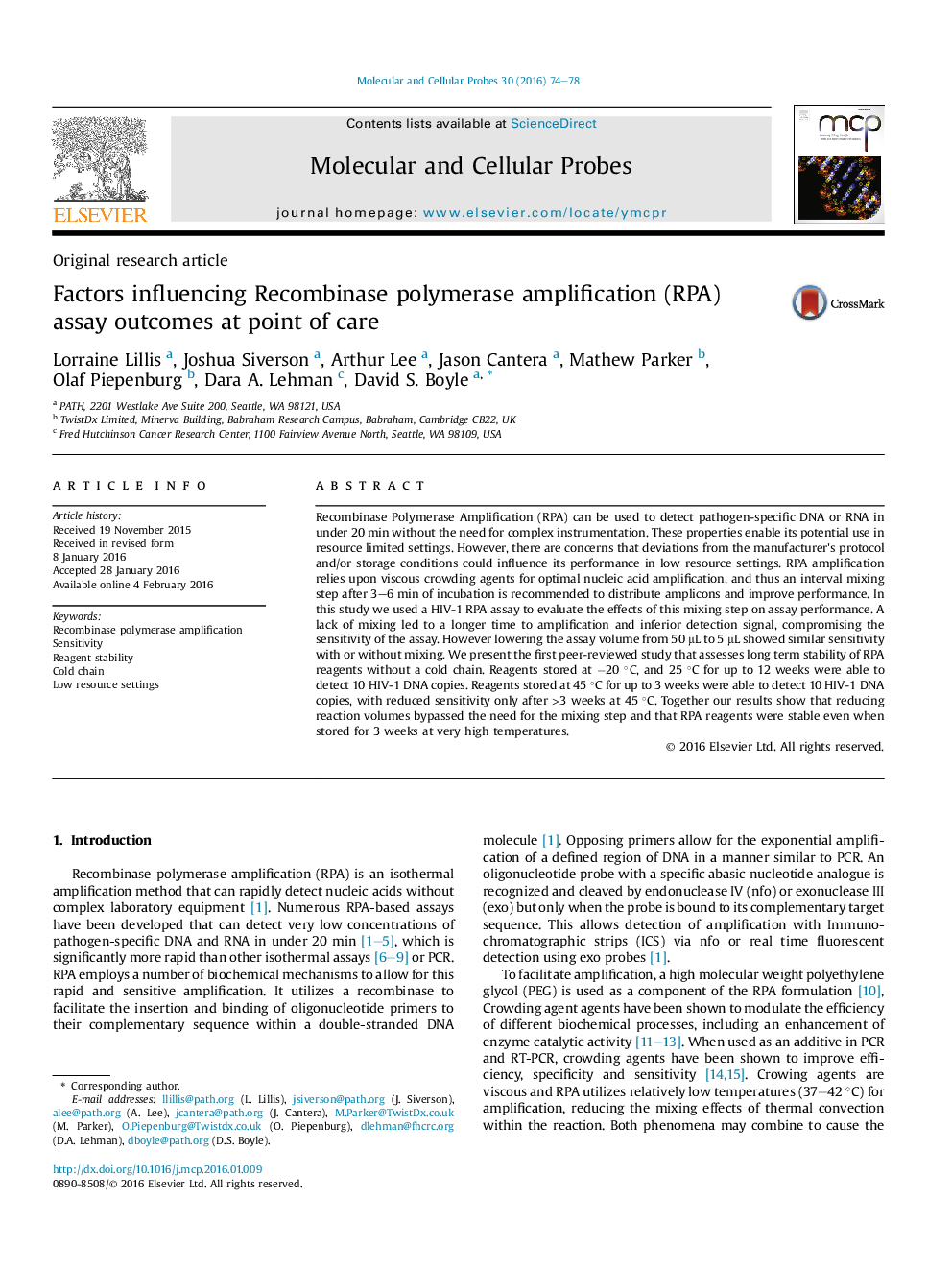| Article ID | Journal | Published Year | Pages | File Type |
|---|---|---|---|---|
| 2199651 | Molecular and Cellular Probes | 2016 | 5 Pages |
•Mix step during RPA incubation is vital for optimum assay performance.•Lower reaction volumes remove the need for mixing during incubation.•RPA reagents are stable at 45 °C for 3 weeks and at 25 °C for 3 months.
Recombinase Polymerase Amplification (RPA) can be used to detect pathogen-specific DNA or RNA in under 20 min without the need for complex instrumentation. These properties enable its potential use in resource limited settings. However, there are concerns that deviations from the manufacturer's protocol and/or storage conditions could influence its performance in low resource settings. RPA amplification relies upon viscous crowding agents for optimal nucleic acid amplification, and thus an interval mixing step after 3–6 min of incubation is recommended to distribute amplicons and improve performance. In this study we used a HIV-1 RPA assay to evaluate the effects of this mixing step on assay performance. A lack of mixing led to a longer time to amplification and inferior detection signal, compromising the sensitivity of the assay. However lowering the assay volume from 50 μL to 5 μL showed similar sensitivity with or without mixing. We present the first peer-reviewed study that assesses long term stability of RPA reagents without a cold chain. Reagents stored at −20 °C, and 25 °C for up to 12 weeks were able to detect 10 HIV-1 DNA copies. Reagents stored at 45 °C for up to 3 weeks were able to detect 10 HIV-1 DNA copies, with reduced sensitivity only after >3 weeks at 45 °C. Together our results show that reducing reaction volumes bypassed the need for the mixing step and that RPA reagents were stable even when stored for 3 weeks at very high temperatures.
